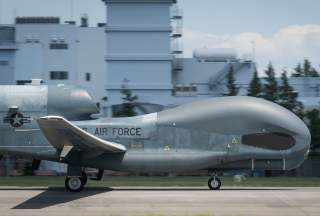America's RQ-4 Global Hawks Are Going to Japan
Watch out, China!
The RQ-4 is the third advanced air asset after the USMC F-35Bs and the U.S. Navy E-2Ds, that the U.S. deployed in Japan in the last few months.
The U.S. Air Force (USAF) plans to deploy five RQ-4 Global Hawks and approximately 105 personnel to Yokota Air Base, Japan, from May to Oct. 2017.
As explained in the article U.S. deploys Global Hawks to Japan, maintains stability of Indo-Asia-Pacific region, the aircraft are currently based at Andersen Air Force Base (AFB), Guam, and their relocation is necessary because summer Global Hawk operations from Guam are adversely impacted by the frequency of inclement weather, including typhoon activities.
So this rotational deployment of the Global Hawk is temporary but necessary to provide a base from which the platform can be reliably operated during the summer.
The RQ-4 is the third advanced air asset after the USMC F-35Bs and the U.S. Navy E-2Ds, that the U.S. deployed in Japan in the last few months. Noteworthy the advanced capabilities of these weapon systems are aimed to further contribute to the security of Japan and to the stability of the region.
The RQ-4 Global Hawk is a high-altitude, long-endurance, remotely piloted aircraft with an integrated sensor suite that provides global all-weather, day or night intelligence, surveillance and reconnaissance (ISR) capacity. Global Hawk’s mission is to provide a broad spectrum of ISR collection capability to support joint combatant forces in worldwide peacetime, contingency and wartime operations. Moreover The RQ-4 is able to provide persistent near-real-time coverage using imagery intelligence (IMINT), signals intelligence (SIGINT) and moving target indicator (MTI) sensors.
This article by Dario Leone originally appeared on The Aviation Geek Club in 2017. Image: DVIDShub.

